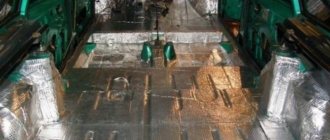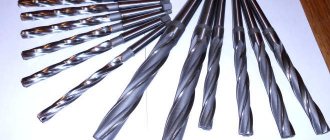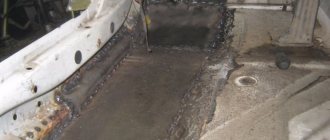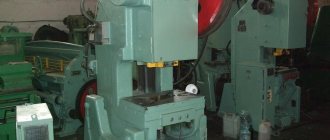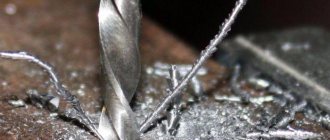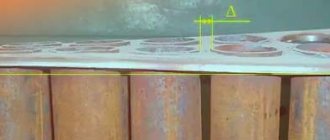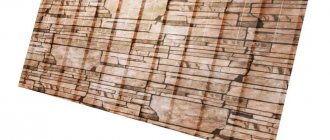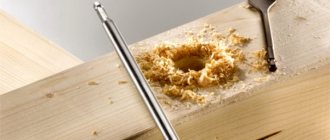Forged vines of various diameters. Photo Center-Kovka
For decoration of metal products and structures, forged elements of various types, shapes, and sizes are used. Additional details allow you to decorate objects that have a standard design or are characterized by simplicity of shapes and lines.
Forged vine is perhaps the most popular decorative element for many products: railings, fences, railings, trellises, etc. Floral detailing transforms and enlivens metal objects, making them look rich and realistic.
The vine attracts customers with its “naturalness”; its smooth curves resemble a living plant. The element is made from rods of different diameters , therefore the thickness of the finished element may vary. This allows you to use the vine to decorate both small objects with the finest lines and large-scale structures with solid configurations.
What products are decorated with metal vines
The versatility of forged vines and the variety of sizes ensures a harmonious design for many products. Natural elements perfectly complement both stylistic objects, such as flower stands, and neutral-shaped structures: fences, balcony and staircase railings.
In addition, the vine is suitable for decoration:
- gates and gates;
- awnings and canopies;
- railings and fences (here you can see how railings are made with vines);
- furniture for the garden: benches, benches and for the interior: tables, chairs;
Wrought iron bench with grapevine. Photo KovArt
- doors and window bars.
Doors with vines. Photo Alois
There are many options. Other organic combinations that capture the imagination and attract attention are presented in the “Photos of forging with vines” section.
Forging vines is a necessary skill for any modern blacksmith.
Today, artistic forging is experiencing a second life, because fashion requires a large number of different products that are made both manually and using various high-tech stamping machines. The basis for many ornaments is the vine; its production is a fairly simple process, but it requires compliance with several nuances.
Almost all blacksmith's products can be decorated with vines: it will decorate forged fences, as well as twisted window grilles, massive balcony railings, and metal stairs. It will give the forged products a rather elegant look. After all, the vine contrasts favorably with geometric shapes.
Today it is so popular that its forging has become a separate branch of blacksmithing, and therefore it has unique methods and solutions.
Thanks to this, the product turns out simply magnificent - it is able to imitate a real grapevine, even reproducing its color.
And a skilled blacksmith will be able to recreate the weaving of the vine, making it look as if it were a real plant climbing along the fence.
How to make your own grapevine forging
To forge a vine, a metal rod of the required diameter is taken, twenty centimeters are marked on its surface, which will subsequently be pulled back. First, the part of the rod on which the mark is applied is heated in the oven. Then it is slightly bent on the blacksmith's horn, and a regular hammer is used.
Next, the end of the workpiece is heated, and the workpiece is tapped on the anvil horn using a slightly larger blade. It is necessary to sharpen the end of the rod slightly, and give the remaining twenty centimeters a slightly rounded shape. Next, the product is put back into the oven.
After the workpiece is hot, you should pay attention to its tip.
Using a small hammer you need to finally sharpen it. The movements should be frequent, but there is no need to put force into them. After the tip is ready, take a slightly larger hammer and use it to tap the entire surface of the workpiece. The task is to shrink the product with blows.
If it has already cooled down, it must be placed in the oven again, and then, as before, the workpiece shrinks. Then, after shrinking, the rod is placed on the anvil, and a special angle is adjusted under it, and a hammer is also taken. They need to tap the mark indicating twenty centimeters. Thanks to this, the pull will take place evenly, but if you do this on the horn, the workpiece will take on a deformed shape, and most importantly, it will look very unnatural.
Then the rod is again placed in the furnace, and the guy continues, it should occur at an angle. You need to work with a hammer over the entire surface of the rod. After this, you need to pull the tip back again, and to make this easier, you need to heat it in the oven.
The tip of the vine must be tapped first on the horn and then on the corner; ideally it should turn out sharp but thin. Next, you should do all the same procedures with other rods, because for an artistic composition you will need several of them at once.
In the end, the following product should be obtained: it should have a uniform thickness over the entire surface, tapering to the very tip, which should be as thin and sharp as possible.
Decorative forging of vines
To make the vine look more natural, an appropriate pattern should be applied to its surface. It is quite difficult to stuff it onto the vine by hand. Therefore, the “matrix” is increasingly used. It is attached to the anvil, and the workpiece must be heated until red hot. Then the product is placed in the device, and then it must be hit with a hammer.
You can stuff the vine in the same place several times without harming the design. The procedure must be repeated until the workpiece is covered with characteristic grooves over its entire surface.
After notches are applied to the vine, it must be bent. This can also be done “cold”, that is, do not put the workpiece in the oven during the work, which will speed up the process. You can bend the vine on the horn. It can be given almost any shape, but you need to be guided by the sketch, otherwise the composition will not be assembled later.
Weaving vines into fence rods
The finished vine can be wrapped around the fence rods, for which you will need an oxygen burner powered by a compressor. The place where it will bend must be heated, and you can wrap it using pliers.
This is quite simple to do, because during the drawing process the rod became extremely pliable, and its thickness decreased.
However, this may take some time, it all depends on the length of the workpiece, as well as on the composition itself.
In order not to damage the structure of the fence grille itself, it is important that its rods are thick enough, otherwise the burner will affect them too. Also, you should not overload it with vines, otherwise the weight of the structure will be extremely high. And it won't look very nice.
Conclusion
Forging a grapevine is a fairly simple process, but it requires some effort and diligence. First of all, you need to take care of the correct drawing of the rod, which will provide the future vine with the desired and correct shape. During drawing, you need to constantly heat the product, which will make it more pliable. It is also important to follow the instructions, using a specific hammer for each step.
The difficulty in the drawing process is the tip of the vine, because it must be thin and pointed, which is not so easy to achieve. Usually beginners break it, and the entire product has to be redone.
To give the grapevine a more natural look, it is necessary to apply notches to it, which can be done manually, but it is better to use a “matrix”, which will facilitate and speed up the process.
The grooves can be applied randomly, which will only give the vine a natural look. The finished product can be used in different ways, for example, to braid a section of a fence with it.
This can be done using an oxygen torch.
Entwining (braiding) iron vines around fencing, railings and fences
Forged vines most often decorate fences, balconies and staircases, railings, as well as low structures for landscape design. Plant elements can be placed on the product in various ways.
The most popular decoration technique is the braiding of vertical, horizontal or abstractly located rods, as well as pillars of buildings.
If you have certain skills, wrapping can be done at home . To do this, you need to purchase or make yourself (more on this later) a grapevine. The place where the element will be bent must be heated; an oxygen burner . The metal will become plastic, as a result of which the performer can easily give it the required shape. Curling is conveniently done using blacksmith pliers.
Important! When exposing the grapevine to high temperatures, it is necessary to prevent heating of the product itself. Otherwise, damage and deformation of the metal may occur. In addition, you should not overload the structure with decorative elements. This not only looks pretentious and inappropriate, but can also lead to the collapse of the structure.
With the help of forged vines, supports of other structures are decorated: lamp posts, gazebos, arches, pergolas, shelves, gratings.
Technology for making forged leaves
Forging grape leaves is an extremely exciting and truly creative activity. Since nature contains amazing plants of the most varied shapes and sizes, you can be absolutely free to give the leaves the most bizarre shapes. To do this, you need to follow some rules and technological recommendations.
The stages of forging grape leaves are as follows:
- Preparing templates from which you will make individual copies. Templates are prepared according to sketches.
- Before the forging process, the sketch is drawn using dot markings with a special drawing needle. This nuance is very important, because you need a natural look and appropriate shape of the products.
- The contour of a grape leaf is created using a thin welding wire: it is bent exactly along the contour, then aligned to apply markings to the axis.
- Carefully drawing the outline of the picture is the next step, as a result of which you get half of the required template. The sketch needs to be bent along the axis to mark the second half of the drawing. You will end up with a great metal template for creating forged leaves.
- With this template, you apply a design to a metal plate using a needle along the edges of the outline. The sheet is then cut down.
- The veining is also applied using a needle. But it is better to do this using the minting technique or a special method of corrugation.
https://www.youtube.com/watch?v=2e3rx_zJV5I
Hot and cold forging
Forged elements of various types are most often produced using the cold forging method, through stamping. This technology involves the use of special equipment, which ensures rapid production and low labor costs. For production, a hydraulic hammer and plant-shaped dies are used. The result of the work is forged elements of a template type, but at a low price.
Reference. Site visitors have the opportunity to purchase factory-produced parts from one of the enterprises that are presented in the “Where to buy forged elements” section.
Hot forging is a hand-crafted metal technology. The method allows you to create “living” elements that are unique in design, real works of art. Their design is developed taking into account the specifics of a particular space.
This option is suitable for special design solutions. To manufacture parts in this way, the contractor requires extensive knowledge and skills, as well as experience. The painstaking and intense work of the craftsman and the uniqueness of each detail determine the high cost.
Forged grapes artistic forging of grapes photo
Making forged grapes with your own hands, photo of a grape storm made of metal
In the artistic forging of metal, there are some favorite solutions that are not very new ideas, but have passed the serious test of time. A classic example of such established stylistic options for decorative metal products can be considered forged grapes.
It belongs to the plant style of forging and is usually used to decorate products and household structures together with such forged elements as: metal leaves, iron vines, spiral metal grape tendrils, steel vines and variously shaped twigs made of blacksmith-forged iron. You can see an interesting photo in which you can easily see all the “spare parts” of vegetable forging with grape motifs.
The product is assembled into a finished composition and is a fragment of a forged fireplace set . I think this is a very beautiful photograph depicting artistic forging of such a style as the classical style with iron plants.
What does vegetable hodgepodge look like?
Photo of forged railings with metal grapes, bunch, vine, tendrils photo
All these decorative elements and forged parts fit very well together, easily assembled into a forging pattern that is extremely versatile and has simply fantastic flexibility. The term flexibility, in this case, is used in a figurative sense, meaning the ease of adapting an artistic solution to a wide range of shapes, sizes and dimensions of metal structures.
Let me explain in more human language.
Floral style of forging with grapes can be used almost everywhere without any problems: decorating gates, fences, gates, railings, stairs, balconies, fireplaces, window grilles, gazebos, furniture, garden benches, pergolas, lanterns, lamps, canopies, canopies and so on . It is difficult to come up with a decorative metal structure where forged grapes could not be used for design.
As an example, I want to show a photograph illustrating an example of using iron grapes to decorate a staircase, or rather in a sketch of a forged railing with bunches of grapes. Let's look at a beautiful photo of artistic forging of a railing for a staircase in a private house.
We manufacture and install railings for stairs, balcony railings, porch railings, fences , gates , wickets, gazebos, furniture, fireplace sets , garden benches, chandeliers, lamps, lanterns, pergolas and stands for flowers with grapes. How to contact us is indicated on the website.
Where can you see metal forging of grapes in the photo?
Photo of forged grapes. The forged grapes are painted with hammer enamel - a beautiful picture of the classic style of metal forging.
Usually, iron grapes can be seen in photographs posted on artistic forging websites. All blacksmiths of the classical school must master the technology of making metal grapes from forged parts.
Our website for artistic metal forging in Dnepropetrovsk is no exception. We have placed our works in the text of this article in the form of small miniatures. Each picture of an iron grape is clickable, that is, it is enlarged to view the image of forged elements in a large size.
On my own behalf, I can add that these are very beautiful photos of artistic metal forging, photographs of the author’s hand-forged works in the best forge in Dnepropetrovsk.
Seeing excellent photographs of forged elements and decorative details, which are essentially small sculptures that emerged from under the hammer and anvil of an experienced craftsman, is in itself a pleasant pastime.
How to paint grapes?
Any decorative metal structures must be painted. On the street, paint will protect the iron from corrosion, but in the interior we do not use such durable paints, but use beautiful decorative coatings. What is the best way to paint iron grapes? Painting artistic forging products is a delicate matter. Especially if it is handmade for design.
Blacksmithing in Dnepropetrovsk usually practices painting forged grapes with patina. Using blacksmith's patina for painting, you can make copper grapes, bronze, gold, silver with your own hands.
A relatively rare way to paint iron grapes is to cover grapes with hammer enamel or powder paint. You can see what grapes made of metal painted with powder paint look like by looking at the photo - how to paint grapes.
Artistic forging of grapes - painting leaves with patina photo
Patination of artistic forging products allows you to achieve other visual effects and, in my opinion, is better suited for beautiful painting of plant-style elements.
Look at the photo where you can see an example of patination, covering a grape leaf with patina. Compare with the impression that hammer enamel produces on similar parts of similar size and shape.
This opportunity doesn't come around often.
Buy metal grapes and related forged elements of plant style
You already know where to buy forged grapes. Since we are now on the website of the blacksmith workshop in Dnepropetrovsk, you can contact us regarding production, purchase, price, cost and other issues. Logical?
There are two options for buying steel grapes from a forge.
The first is that forged grape bunches are sold as separate, independent elements of iron design. Designed for making artistic forging products with your own hands and attached to structures using conventional welding.
Image in the photo: iron grapes artistic forging bottle holder
The second is to order a finished metal product , fully functional, instructing the blacksmith to decorate it himself with bunches of forged grapes, including them in the sketch of the iron design in the best possible way.
The intermediate stage of cooperation with the buyer of forged metal grapes is the approval of a sketch of forging in a floral style.
A very convenient option, you receive a completely finished product of classic hand forging in a floral style, taking into account your wishes during the manufacturing process.
How to make grapes from metal with your own hands?
The technology for making forged grapes with your own hands at home is relatively simple. The stumbling block is usually ordinary balls. In a forge, a master solves this issue easily, thanks to the use of a forge hammer and a special stamp.
He heats the iron rod to a bright red color and, with strong blows of the hammer on the stamp, chops off pieces of metal, each of which immediately takes on the characteristic shape of a grape.
When making a bunch of grapes, several stamps are used, which allow you to assemble a bunch with your own hands, not from identical iron berries - this is not very beautiful, but by combining grapes of different shapes and sizes. Which then gives the product with grape forging a more natural look.
If there is no forge, forge and hammer?
If you do not have a home forge or a mini forge in a private house, then in order to make grapes from metal you have to use ready-made iron balls.
Where can I get balls for making grapes from iron with my own hands at home? The source of metal balls is simple and original - these are bearings.
Follow the rule - it is best to place balls of not the same size in one bunch of grapes, but at least two, preferably three, diameters.
Assembling a metal grape thunderstorm
The idea of assembling the balls and forming an iron grape thunderstorm is to not try to weld the balls together. With this method of making grapes from metal, in any case, unsightly and very noticeable welds, spots, drops, and splashes are obtained.
Intermediate operation
To make a bunch of forged grapes, first a piece of an iron rod, quite thin, is welded to each ball; it is better to take wire. When forming a bunch, it is not the balls themselves that are welded, but their wire tails.
This allows you to get a clean and neat surface of a bunch of forged grapes, hide the welded joints inside, making them invisible to the viewer.
Who will only have to look at a very beautiful vegetable forging product made by you with your own hands at home.
Where to attach a bunch of grapes made of forged metal
Photography technology for making grapes, artistic forging of plants from metal. Forge in Dnepropetrovsk photo.
Now the last question. Well, we were able to learn how to make forged grapes, select the correct diameter of the balls, and mastered the technology of assembling the product.
What's next? Where to secure a bunch of forged grapes? This is where we remember those related decorative metal parts and forging elements that harmonize well with iron grapes.
It is best to attach metal grape bunches by welding through wire tails, directly to a forged vine, made in advance from a metal rod of a suitable diameter in proportion. We look at the photo of forged grapes and iron vines.
Grapevine: structure, development, growth phases
Beginning gardeners who decide to acquire their own vineyard must not only understand how to properly care for a grapevine, but also have some knowledge of the biology and structure of the grapes with which they will work in the future. Grapes are climbing plants that require support to ensure full development. Rooting is carried out due to the fact that the vine spreads along the surface of the soil. The part of the grapes located above the ground grows quite quickly, reaching enormous sizes. If growth is not controlled, the vineyard grows chaotically and the yield becomes lower. Only through proper care can high yields and full development of the plant be achieved.
Grapevine and its structure
In its structure, the grape vine resembles a tree, since it has a rhizome, a trunk, and a crown. An underground trunk is a cutting planted in the ground and from which a bush later grows. The parts below and on the sides give roots, but the eyes located on the surface form the crown. After 3-4 years, a sleeve grows, which is the main part of the vine. During the formation of such sleeves there can be from 1 to 6.
The upper part of the trunk is the head; as soon as it turns 2 years old, the trunk is considered old. Since only green shoots that are no more than a year old bear fruit, it is necessary to promptly remove woody parts.
The head contains buds that promote recovery in case the bush freezes, or when the pruning process was carried out quite diligently. These kidneys awaken only at the moment when it is necessary.
On the reverse side of the leaf there are tendrils, with the help of which the grape vine is attached to the support. Inflorescences form in autumn. It is worth considering that there are three types of flowers:
- female - strong development of pistils is observed;
- male – highly developed stamens;
- bisexual.
If the bush is female, then it is necessary to plant another bush next to it, which is male or bisexual.
Root system
The root can sprout from seeds or from buds located on the lower part of the petiole. It is the development of the root that affects the splendor and productivity of the grapevine. That is why it is recommended to approach the rooting of the shoot responsibly. The root system consists of several levels. The first level is insignificant, since it is where nutrients are transferred to the branches. On the second, the roots are located on the sides. The third level is considered the most basic, since the entire load of nutrient absorption is concentrated on it.
Young shoots receive nutrients from old roots, which are covered with bark. Young shoots act as a link between the old root system and new roots. On the small roots there are many villi, thanks to which organic matter and minerals are taken from the soil.
Root development is entirely dependent on the soil and the nutrients it contains. The lower part, in the best case, should have about 5 or 6 branches.
Aboveground part of the vineyard
When growing a grapevine, it is worth considering that the above-ground part consists of a trunk and a sleeve on which the shoots are located. In the summer, foliage, tendrils, inflorescences, and grapes appear on annual shoots.
Stem (trunk)
The formed grape trunk has nodes and internodes. The nodes have partitions that can be distinguished on four sides:
- Abdominal.
- Dorsal.
- Grooved.
- Flat.
The convexity on the ventral side is explained by the fact that fibers, bark, and pith develop best on it. During growth, the dorsal part is elongated, and the vine stretches towards the ventral side. Once the growing period ends, the vine becomes even.
Sleeves and annual shoots
To grow a vineyard, you need to prune it. When planting grapes, you can form a vine by pruning old branches. In normal grapes, up to 7 such branches appear during the growth process; if more, then the entire vine must be cut off.
Annual shoots tend to form from overwintering buds covered with green bark. It is from such shoots that foliage, flowers and fruits subsequently appear. Thick branches cannot bear fruit; they only take away nutrients from the juices, thereby reducing the yield level. In summer, when pruning, such branches are removed.
Leaves and tendrils
The leaf composition includes petioles, stipules and plates. Stipules tend to fall off in a short period of time. Nutrients are supplied through the petiole. The leaf blade is quite large and green in color. Tendrils resembling branches appear from the internode. It is thanks to them that the grapes can cling to the support, supporting the mass of the bush.
Inflorescences and fruits
The flowers of the grapes are green and look inconspicuous. The corolla of the flower in its structure resembles a small cap. During flowering they disappear. Flowers can be: female, male, bisexual. Pollination occurs in windy weather. The berries that appear are green and small in size. Gradually they become larger and acquire color.
Stages of grapevine development
When growing a vine, you need to understand what stages of development will go through. The preparation of the vineyards for wintering completely depends on this.
Juice movements
The formation of a grape bush begins with the movement of juice; this period occurs in the spring, when the temperature rises to 9 degrees Celsius. As a result of the intense release of juice, it begins to drip and may seem as if the vineyards are crying. It is recommended to trim the branches before the sap begins to flow.
Growth phase
As soon as the movement of juices is completed, the growth stage begins, by which time the temperature remains within 15 degrees Celsius. It is at this time that proper care is required, since the shoots increase up to 10 centimeters every day. If you neglect this, then you should not be surprised why the vineyard does not grow. As soon as the grapes reach a height of 30 centimeters, they need to be tied up. During the growth process, the bushes require feeding.
Bloom
The flowering of the vineyards lasts about 20 days. A few weeks before flowering, it is recommended to apply root feeding. During the flowering process, it is necessary to control the number of inflorescences. The weak ones must be removed. Since fertilization is sometimes hampered by bad weather, it must be carried out independently - artificially.
Fruit growth and ripening
During growth, there is no need to take any action in relation to the grape bushes. The main thing that is required is to monitor the fruits, promptly remove parasites and identify diseases in the crop. As soon as the grapes are full, the shoots are minted and the shoots are removed. Thanks to this procedure, you can increase productivity.
Leaf fall and dormant period
After harvesting, the foliage turns yellow and falls off. It is at this moment that the grapes stop growing and the juice stops flowing. If the vine begins to dry out, then you need to know what to do in such cases. After the foliage has completely fallen and the temperature has reached zero, it is necessary to prune and harvest seedlings. The dormant period will continue from late autumn to early spring.
Undoubtedly, in order to get a good harvest, it is necessary to constantly care for the vineyards. Also, do not forget that plants must be prepared for wintering according to all the rules characteristic of specific varieties.
vinohobby.ru
Metal elements of interesting texture: grapes and leaves
Elements of climbing metal grapes are considered indispensable attributes in classic interiors . These products with decorative texture not only imitate floral patterns, but also have artistic value . To fully imitate living shoots, after forging, the vine is twisted into various bends from rings.
Then the drawings with a variety of leaves and berries come to life before our eyes. To create a unified composition on various products, craftsmen use not only the vine, but also separately berries, clusters and leaves .
Styles: modern, baroque
Forged vine decor has found wide application in the Art Nouveau and Baroque . The first direction is characterized by rounded lines and floral patterns .
Forged stair railings with grapes, vines, leaves and shoots in Art Nouveau style. Photo Iron Age
The Art Nouveau vine is a fundamental motif. This combination looks very attractive. Also, the fancy grape lines of the vine fit perfectly into the Baroque, Classicism, Rococo styles and bring them closer to nature. We wrote more about forging styles in modern products in another article.
Reference. Photos of forged grapevines decorating various products and designs are presented in a separate section of our gallery. Below, for clarity, we present a video with a slideshow of pictures from there.
Grapes
Berries of the plant are carried out using two methods. The first involves the blacksmith making a bunch in the form of a plate with voluminous grapes. This element looks great on flat elements - gates, fireplace screens, shelves and furniture. Thanks to its flat base, it can be easily secured and the connection will be reliable.
The second option is more realistic. The master forges each berry separately in a bunch, which creates the effect of volume and realism. This element looks best between the fence bars.
Grapes - history, description, care features, varieties and diseases + 80 photos
Grapes (lat. Vitis) are one of the most healthy and delicious berries of the Grape family (lat. Vitaceae). Its healing and nutritional values are well known to everyone.
The fruit contains light sugars such as fructose and glucose. They also include citric, tartaric, oxalic and malic acids, and also contain chemical elements (iodine, sodium, aluminum, boron), and vitamins C, B and A.
The rich content of such useful substances creates that sweet and divine taste of both fresh and dried (raisins) bunches, wines, compotes, juices.
History of the divine berry
Such a wonderful berry like grapes is the first cultivated plant. It was first cultivated five centuries BC. in Egypt. In the modern world there is no continent on which this bunch does not grow.
The first to bring grape shoots to Crimea were the Greek sailors. O. Pushkin often described the beauty of the grape-growing Crimea in his works.
Viticulture as such appeared in Transcaucasia, as well as Central Asia. Then the grape shoot came to Moldova, crossing the Balkans.
Description of grapes
Grapes are a member of the Vinogradaceae family. The stems are vines. In the first year, a small shoot (vine) grows from the seeds.
The next year, well-developed stems grow from the buds of grape seedlings, and the next year, the buds produce stronger shoots.
The flowers form an inflorescence of a white panicle. The fruits are ovoid berries that form a cluster. Color can vary from green and yellow to dark purple.
Features of planting and care
Grapes are a plant that loves warmth and light, grows well in windless places (gardens, valleys, sheltered from the wind by highlands, rocky hills).
Dark types of grapes require a warmer climate to grow productively than light types. Therefore, in areas with a cool climate, it is best to grow light varieties.
All types of soil are suitable for planting grapes, except swampy areas and waterlogged soil, since on such soil grapes will not produce the desired fruits.
Selecting a seat. If your soil is waterlogged, be sure to make a drainage system.
The planting site is prepared two weeks in advance by multi-tiered digging. In addition, if the selected area has high acidity (pH
greenyjmir.ru

